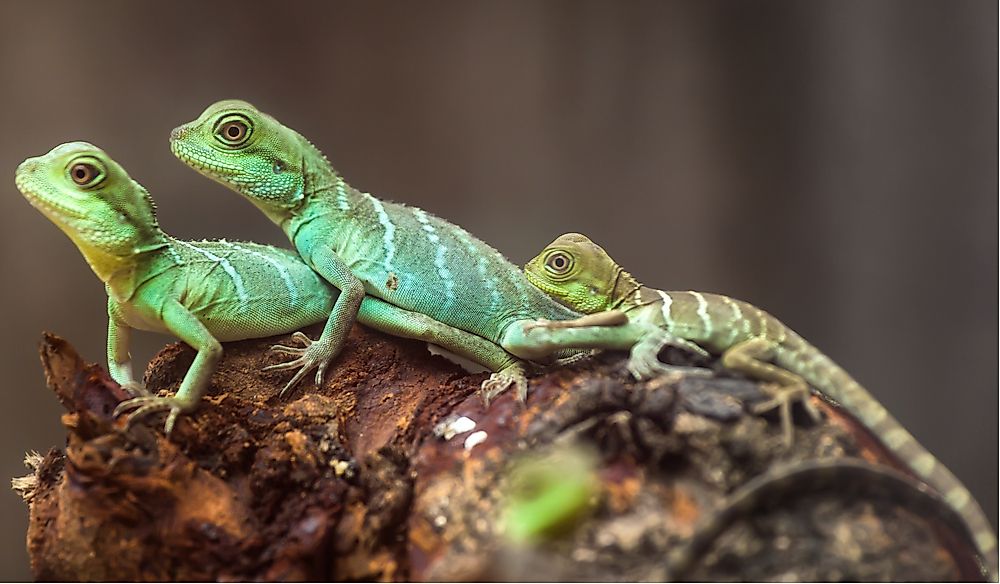How Many Species Of Reptiles Are There?

Reptiles are tetrapod animals belonging to the class Reptilia, which includes turtles, snakes, crocodilians, tuatara, lizards, and amphisbaenians. Reptiles likely originated more than 312 million years ago, when the first species evolved from the advanced reptiliomorph tetrapods. Today, animals belonging to class reptilian range in size from tiny geckos to huge saltwater crocodiles that measure more than 19 feet in length. There are approximately 10,700 extant reptile species.
Characteristics of Reptiles
Reptiles either have four limbs or, like snakes, are relatives of four-limbed creatures. They are cold-blooded, meaning that they do not self-regulate their body temperatures, but rather rely on the external environment. Reptiles do not have the aquatic larval stage like amphibians. Instead, most reptiles are oviparous, meaning they lay eggs, while some are viviparous, meaning the embryo develops inside the mother and eventually results in a live birth.
Reptile Species
The Reptile Database is a database that lists all living reptiles and their classifications. It also contains images for most reptiles on the list. There are more than 10,700 extant species of reptiles recorded in the Reptile Database, making reptiles one of the most diverse types of vertebrates in the world. Compared to other species, only birds and fish have more types of species than reptiles. Additionally, there are approximately 5,000 and 7,000 species of mammals and amphibians, respectively.
Classification of Reptiles
Reptiles form part of the domain Eukaryota, which consists of organisms that have a nucleus within membranes. They are also included in the kingdom Animalia, which are organisms that ingest food and are multicellular. Reptiles are further classified as Chordata because of the presence of a spinal cord running the length of their back. As Chordata with backbones, they belong to subphylum Vertebrata and class Reptilia. There are four major groups of reptiles: Crocodilia, Squamata, Sphenodonita, and Testudines.
Crocodilia
The order Crocodilia is a subclass of Archosauria and contains some of the largest reptiles including crocodiles, caimans, alligators, and gavials. Reptiles in this order are mainly carnivores and typically inhabit tropical and subtropical rivers, swamps, and streams. They have strong jaws which facilitate a powerful bite, advanced brains, and greater intelligence than other reptiles.
Squamata
The Squamata order contains terrestrial reptiles such as snakes and lizards. There are approximately 3,750 species of lizards and 3,000 species of snakes. These animals have the ability to crawl or creep using their abdomen. They possess skin covered with horny scales that are periodically shed. Although snakes do not have legs, they evolved from four-legged ancestors.
Sphenodontia
Sphenodotia is the least specialized group of reptiles, with brains similar to those of amphibians. The best-known sphenodontite is the tuatara, which is a species that has a wedge-like skull with primitive eyes and socketless teeth. The lizard-like creature lives primarily in New Zealand.
Testudines
There are approximately 250 species belonging to the order Testudines, which are primarily turtles and tortoises. The species are four-legged and have a hard shell covering most parts of the body. They are mainly aquatic and are the oldest living reptiles in the world.











